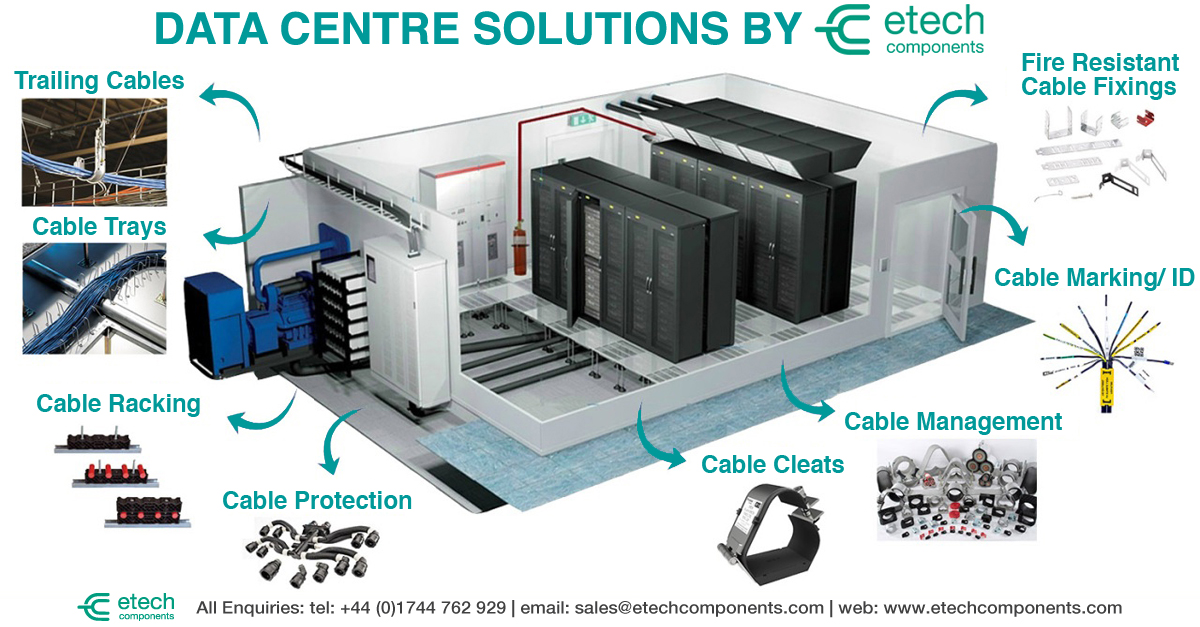Cable Management for Data Centres
E-Tech Components stock and supply a vast range of power cable components, equipment and solutions, adhering to Standards for Data Centres. Our solutions include Cable Glands, Cleats, Separable Connectors, Terminations, Labels & Markers, Cable Management Solutions and Earthing Products from leading industry brands such as Elpress, Prysmian, 3M™, nVent ERICO (Caddy), Dutchclamp, Pfisterer, AN Wallis and more.

The continuous and secure storage of information is critical, making data hubs essential for businesses that rely on 24/7 access to their systems. But what exactly is a data centre, and how does it support reliable uptime around the clock?
What is a Data Centre?
 “A physical facility that organisations use to house computer systems, networking equipment and associated components, such as telecommunications and storage systems, used for collecting, storing, processing, distributing or allowing access to large amounts of data.”
“A physical facility that organisations use to house computer systems, networking equipment and associated components, such as telecommunications and storage systems, used for collecting, storing, processing, distributing or allowing access to large amounts of data.”
Design is based on a network of computing and storage resources that enable the delivery of shared applications and data. Almost every business and government entity either needs its own centre or access to someone else’s. Some build and maintain them in-house, some rent servers at co-location facilities (also called colos) and some use public cloud-based services at hosts like Amazon, Microsoft and Google.
Cabling infrastructure underpins the entire facility’s operations. And efficient cable management makes sure that these critical systems remain reliable, energy-efficient and safe.
Types of Data Centres
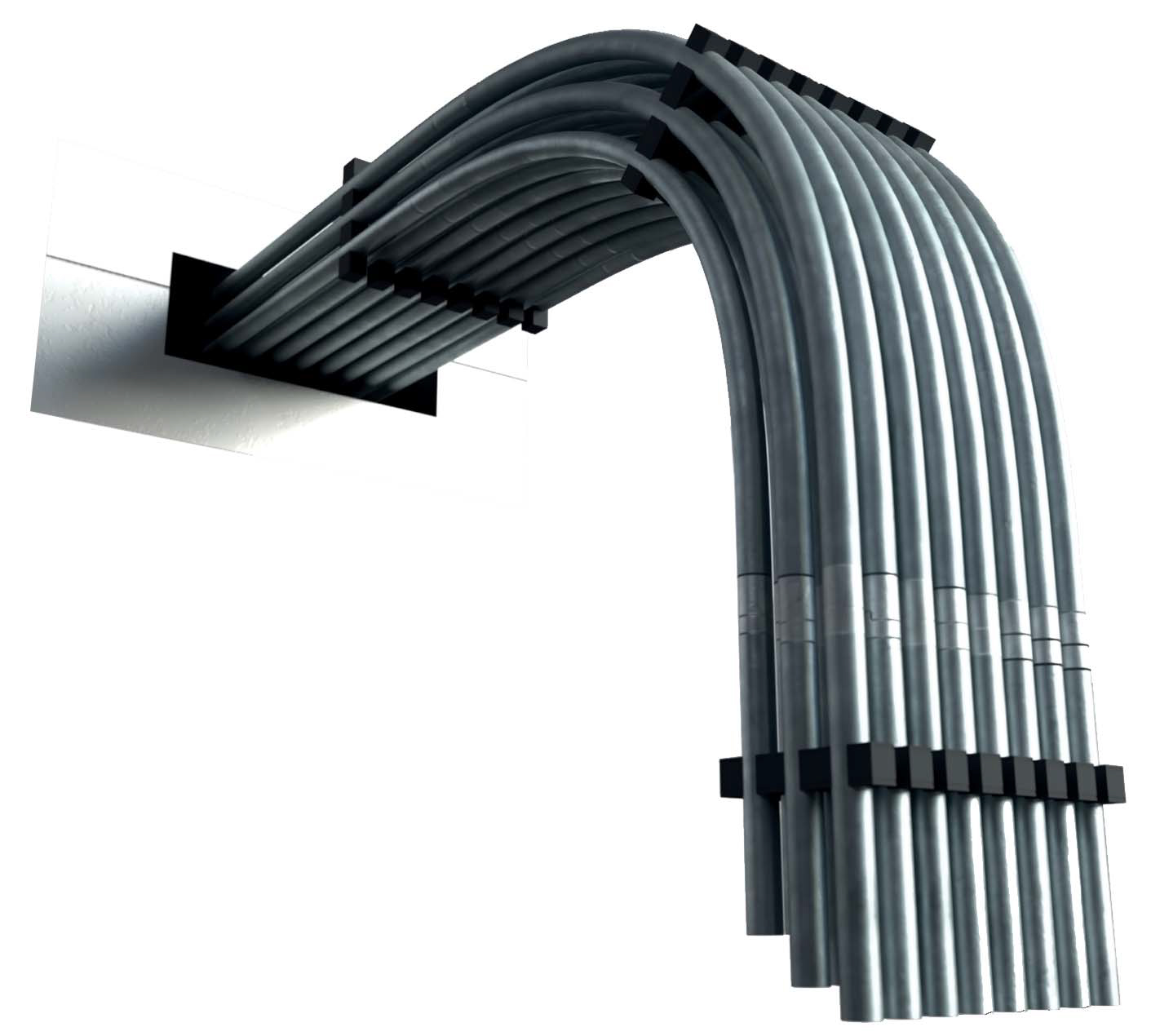
- Enterprise Data Centres: Built, owned and operated by companies, and optimised for their end users – often located on corporate campuses
- Managed Services Data Centres: Managed by a third party on behalf of a company, which leases the infrastructure instead of owning it
- Colocation Data Centres (Colo): A company rents space in a data centre owned by others. The centre provides cooling, bandwidth and security, while the company manages its servers, storage and firewalls.
- Cloud Data Centres: Data and applications are hosted by cloud providers such as AWS, Microsoft Azure or IBM Cloud
Regardless of the type, careful design and installation of the power cable system are critical and should be addressed from the very start of any project.
Why Data Centre Cable Management Matters
Efficient cable management is the backbone of a reliable data hub. Poorly organised cables not only make maintenance and troubleshooting difficult. They can also directly impact energy efficiency, uptime and safety. Proper cable management helps:
- Boost operational efficiency – Clearly routed and labelled cables reduce human error and shorten maintenance time
- Enhance energy performance – Tidy cable layouts prevent overheating and allow cooling systems to operate efficiently. Organised cable lengths reduce energy loss and signal degradation.
- Support health & safety compliance – Properly routed and fastened cables minimise trip hazards and fire risks
- Enable scalability – A structured cable system allows for seamless expansion, upgrades and reconfiguration without disrupting existing operations
Investing in high-quality cable management solutions early in the project protects against unplanned downtime, costly maintenance and long-term operational inefficiencies.
Common Challenges in Cabling
Even well-designed data hubs face cabling challenges, such as the following:
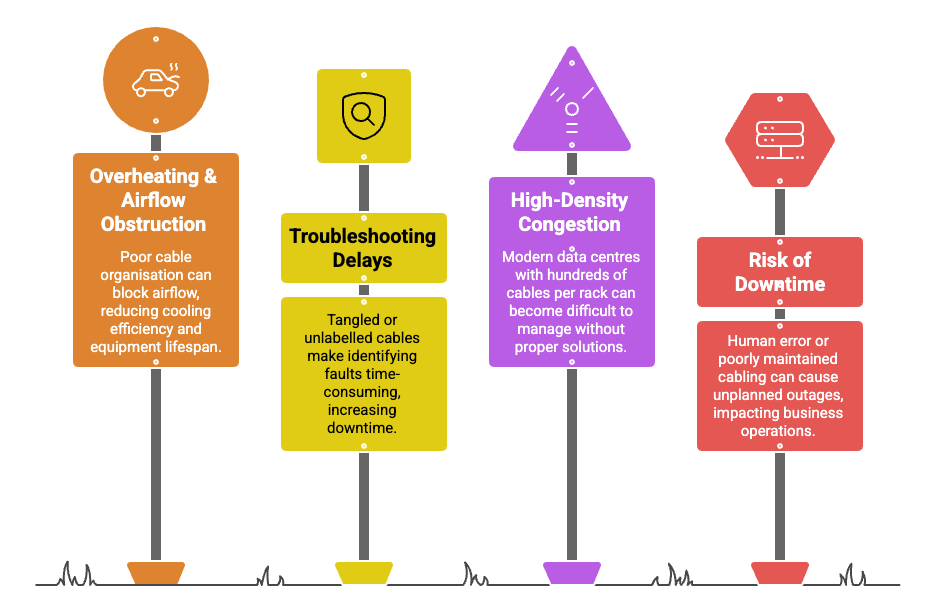
Data Centre Cable Standards
By following established standards, you make sure that a data hub’s cabling infrastructure is reliable, compliant and future-ready.
| STANDARD | DESCRIPTION |
| ANSI/TIA-942-A Infrastructure Standard for Data Centres | Defines the requirements for data centre and computer room telecommunications infrastructure, including site selection, building design, electrical and mechanical systems, safety and security. |
| ANSI/BICSI 002-2019 Data Centre Design and Implementation Best Practices | Guides the implementation of all major data centre systems, detailing best practices to meet operational and performance requirements. |
| ASHRAE 90.4-2016 | Recommends construction, operation and maintenance practices for data centres, emphasising energy efficiency, renewable energy use and thermal management. |
| CENELEC EN 50173-5 Information Technology – Generic Cabling Systems Part 5: Data Centres | Aligned with TIA-942, this European standard sets cabling requirements to support current and future data centre applications. |
| ISO/IEC 24764 Information Technology – Generic Cabling Systems for Data Centres | International standard based on TIA-942 and EN 50173-5, covering balanced copper and optical fibre cabling for data centre deployment. |
Cabling Best Practice
Structured vs. Unstructured Cabling
Structured cabling uses predefined pathways, connection points and routing standards, improving organisation, scalability and overall performance. Unstructured cabling may appear quicker to install but can lead to maintenance difficulties, reduced reliability and higher operational costs.
Cable Types
Choosing the correct type of cable is critical for reliable data transmission, power delivery and safety. Data hubs typically use AC/DC power cables to supply electricity, copper cables (coaxial, unshielded twisted pair, or shielded) for network connectivity, fibre optic cables for high-speed, long-distance data transfer, and grounding cables to protect equipment and personnel from electrical faults. Selecting the right cable for its purpose helps prevent signal loss, reduces downtime and supports effective airflow and thermal management.
Colour Coding & Labelling
Standardised labelling and colour codes make it easy to identify connections, simplify maintenance/troubleshooting and maintain compliance with industry standards.
E-Tech Components provides labelling, cable ties and other solutions for data centres to help engineers implement these best practices efficiently and reliably.
Components and Solutions for Data Centres
Key components in data hubs include Routers, Switches, Firewalls, Storage Systems, Servers and Application-Delivery Controllers. Not forgetting Power Subsystems, Uninterruptible Power Supplies (UPS), Ventilation, Cooling Systems, Fire Suppression, Backup Generators and Connections to External Networks as well.
The aforementioned components for data centres – along with hardware and software – require significant infrastructure to support. Some of the solutions we offer to help include Cable Glands, Cleats, Separable Connectors, Terminations, Cable Management Solutions, Labelling & Marking and Earthing Products:
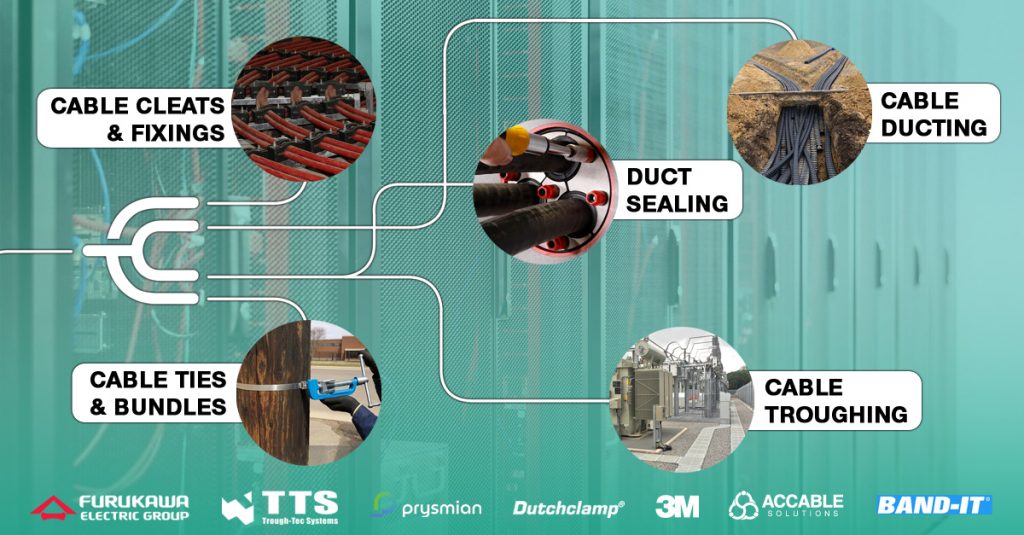 |
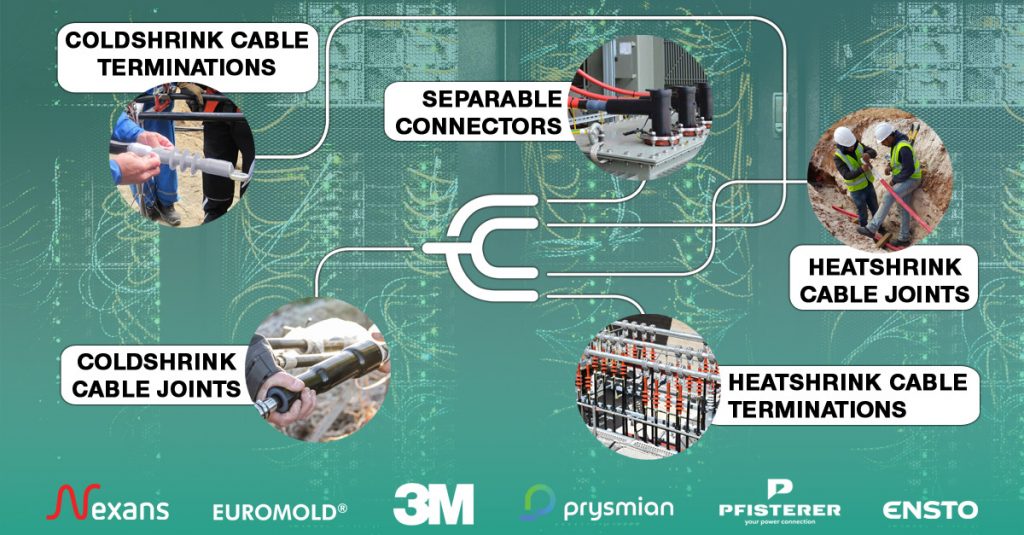 |
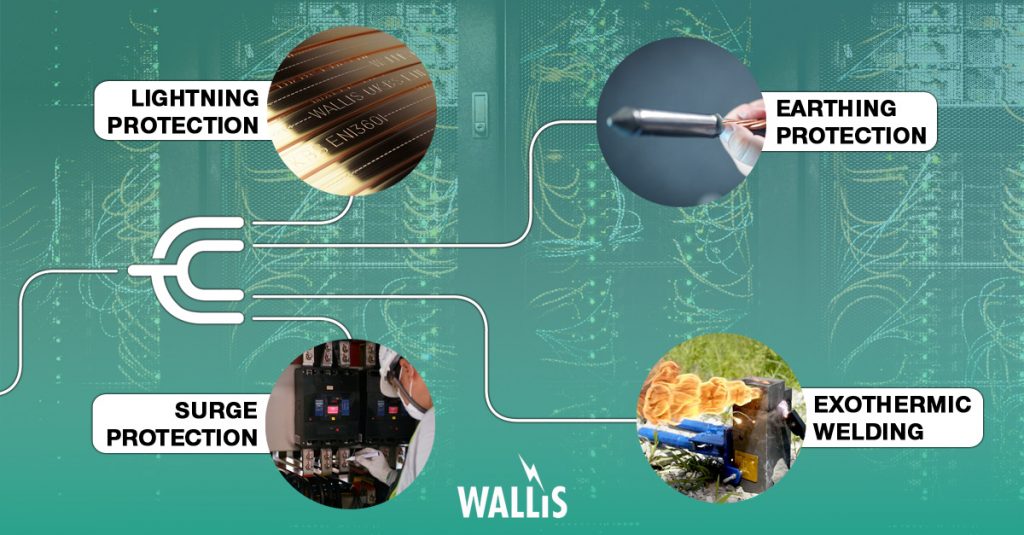 |
Future-Proofing Your Data Centre
Data centres must be designed with growth and adaptability in mind, and future-proof cable management plays a crucial role in ensuring that infrastructure can accommodate higher bandwidths, denser cabling and evolving technologies.
Key strategies for future-ready cabling include:
- Scalable, modular solutions for data centres – Flexible cable pathways, ladders and trays that adapt to changes without major overhauls
- Durable, high-quality materials – Support high loads and harsh conditions, reducing maintenance and replacement costs
- Improved layout and planning – Minimises installation time, maintains proper airflow and simplifies troubleshooting
- Integration with DCIM and monitoring systems – Enables proactive management and planning for future expansions.
E-Tech Components’ products are specifically designed to help data hubs remain efficient, safe and ready for future demands, providing a long-term investment in operational reliability.
Conclusion
To achieve reliable data centre performance, safety and scalability, using high-quality components and effective cable management solutions is essential. With our comprehensive range of products and expert guidance, engineers and project managers can efficiently run their data hubs today while staying prepared for the demands of tomorrow.
Follow link for more Blog Posts on: Tooling, Standards & Regulations.
